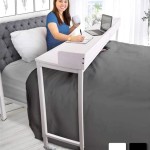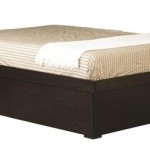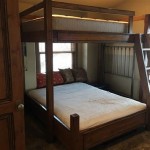How Do I Make A Raised Garden Bed Out of Pallets?
Creating a raised garden bed from pallets offers an economical and environmentally friendly way to cultivate plants. This approach provides excellent drainage, minimizes soil compaction, and allows gardeners to control the soil composition. This article will guide you through the steps of building a raised garden bed using reclaimed pallets.
Sourcing and Selecting Pallets: The first step involves acquiring suitable pallets. Look for pallets stamped with "HT" (heat-treated) to ensure they haven't been treated with harmful chemicals. Avoid pallets marked "MB" (methyl bromide), as this fumigant is toxic. Check for broken boards, protruding nails, or signs of rot. Sturdy, undamaged pallets are essential for a safe and durable raised bed.
Disassembling the Pallets: Carefully dismantle the pallets using appropriate tools. A reciprocating saw with a metal-cutting blade can efficiently cut through nails, while a pry bar and hammer can be used to remove boards more gently. Wear safety glasses and gloves to protect against splinters and flying debris. Sort the reclaimed wood based on size and condition, discarding any unusable pieces.
Planning and Measuring: Determine the desired dimensions of the raised bed. Consider the available space, the types of plants to be grown, and the overall aesthetics of the garden. Sketching a simple diagram can be helpful. Measure and cut the reclaimed pallet boards to the required lengths based on the planned dimensions.
Constructing the Frame: The frame provides the structural integrity of the raised bed. One method involves creating a rectangular frame by joining the cut boards using screws and metal brackets. Ensure the corners are square and securely fastened. For added stability, consider using thicker boards for the frame or adding internal supports. The height of the frame will depend on the desired depth of the planting area.
Creating the Base: The base of the raised bed will contain the soil and needs to be sturdy enough to hold the weight. Line the inside of the frame with heavy-duty landscape fabric. This will prevent soil from escaping through the gaps in the pallet wood while still allowing for proper drainage. Secure the landscape fabric to the frame using staples or small nails.
Assembling the Sides: Attach the remaining pallet boards to the frame to create the sides of the raised bed. These boards can be arranged horizontally or vertically, depending on the desired aesthetic. Ensure the boards are securely fastened to the frame using screws or nails. For a more polished look, consider using a power sander to smooth the edges of the boards before assembly.
Reinforcing the Structure: Depending on the size and height of the raised bed, additional reinforcement may be necessary. Adding corner braces or internal supports can help prevent bowing or warping over time. Metal brackets or wooden blocks can be used for this purpose.
Preparing the Soil: Before filling the raised bed, it's essential to prepare the soil. A mixture of topsoil, compost, and other organic matter provides a fertile and well-draining medium for plant growth. Consider the specific needs of the plants being grown when choosing a soil mix. Adding organic matter improves soil structure, drainage, and nutrient content.
Filling the Raised Bed: Fill the lined frame with the prepared soil mixture. Spread the soil evenly, ensuring it reaches the desired depth. The depth will depend on the types of plants to be grown. Leave a few inches of space between the soil surface and the top edge of the frame to prevent soil from spilling over.
Finishing Touches: Once the raised bed is filled, add any finishing touches. Consider staining or painting the exterior of the bed to protect the wood and enhance its appearance. Adding a layer of mulch on top of the soil helps retain moisture, suppresses weeds, and regulates soil temperature.
Planting and Maintenance: Now the raised bed is ready for planting. Choose plants that are appropriate for the size and location of the bed. Follow recommended planting guidelines for spacing and depth. Regular watering, fertilization, and pest control are essential for healthy plant growth.
Building a raised garden bed from pallets offers a cost-effective and sustainable way to enhance any garden. With careful planning, proper materials, and attention to detail, a pallet garden bed can provide years of productive and enjoyable gardening.

Diy Raised Garden Bed Using Pallets Amanda Seghetti

Diy Pallet Raised Garden Bed Gate

Diy Raised Garden Beds With Pallets

How To Make A Raised Bed Using Pallets Kellogg Garden Organics

Build A Raised Bed From Pallets

Diy Pallet Raised Garden Bed Gate

Diy Raised Garden Bed Using Pallets Amanda Seghetti

Diy Pallet Garden Raised Flower Bed Ideas

Diy Raised Garden Bed Using Pallets Amanda Seghetti

How To Make A Raised Garden Bed From Pallets
Related Posts







